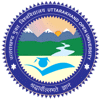User:Wikitrainers/page:DECP05-Unit3-Ch2
| Home | About UOU | About CEMCA | Contact Us
| |||||||||||||||||||
|
Chapter 3.2- Learners Profile Analyze
As per current scenario, learner at the urban areas have access to great technology like iPad, Android Pads, Laptops, 3G connectivity and always on Internet connections whereas in rural areas, very few learners have computers, Internet access and other multi-media facilities readily accessible with them. These facilities are found more in metro cities than in any rural area. At some rural areas, universities and other Institutions of higher learning, have few computers, for the use of students and academic staff. However, they are not enough to meet the demand. The majority of rural and semi-rural areas in India lack access to basic learning resources and necessary information like internet and PC at home. Owing to this situation, students are denied the chance to actively participate in the learning process and this seriously degrades the quality of provided education. In most areas, the connectivity of internet is done using Public switched telephone network (PSTN) and leased lines. The available bandwidths are: 32kbps, 64kbps, 128kbps or max 144kbps in many areas but things are changing gradually and rural areas are also getting equipped with Broadband connections having speed of at-least 256 kbps to 2 mbps depending upon the availability of BSNL & Reliance connections. A new addition to internet accessibility came in just couple of years ago which barricade all the hurdles in reaching rural/remote untouched areas and that is introduction of 3G powered usb data dongles which is using existing telecom network so that means where ever a user have a mobile phone connection, he can have the internet connection ready with him. All he need to have a Laptop or Personal computer to access the learning resources
|
| |||||||||||||||||
| OER - Post Graduate Diploma in eLearning Uttarakhand Open University
|
====== Design By: Yogesh Munjal == | ||||||||||||||||||
